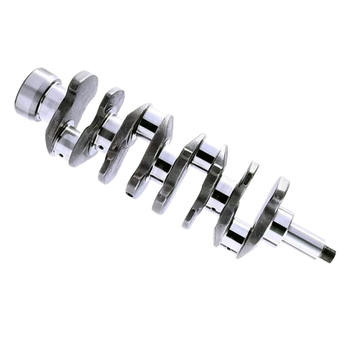The crankshaft is a crucial component in an engine, transforming the linear motion of the pistons into rotational motion to drive the vehicle's wheels. In this article, we'll explore the crankshaft's design, function, and maintenance, providing actionable tips to keep your engine running smoothly.
How Does a Crankshaft Work?
A crankshaft is designed to convert the reciprocating motion of the pistons into the rotational motion needed to turn the vehicle's wheels. The crankshaft accomplishes this through a series of offset journals and cranks. Each journal corresponds to a piston in the engine, and the cranks provide the necessary offset for the conversion of motion.
Design and Material Considerations
Crankshafts must be strong and durable to withstand the extreme forces generated by the engine. They are typically made from cast iron or forged steel, with forged steel being the stronger and more expensive option. The design of a crankshaft includes counterweights to balance the forces generated by the reciprocating motion of the pistons, reducing engine vibration and improving overall performance.
Potential Issues with Crankshafts
Although crankshafts are built to last, they can still experience problems over time. Common issues include wear on the main or rod bearings, cracks in the crankshaft, or damage to the journals. Regular maintenance and inspection can help identify potential problems early, preventing more significant issues down the road.
Maintaining Your Crankshaft
Proper maintenance is key to ensuring the longevity of your crankshaft. Here are some actionable tips to keep your crankshaft in top shape:
- Change your engine oil regularly, using the recommended oil type and weight for your vehicle.
- Monitor your engine for unusual noises or vibrations, as these could be signs of crankshaft issues.
- Have your engine's timing and balance checked regularly to ensure optimal performance and reduce stress on the crankshaft.
When to Replace a Crankshaft
In some cases, a crankshaft may need to be replaced due to wear or damage. Some signs that a crankshaft may need replacement include:
- Excessive engine vibration or noise.
- Low engine compression or power output.
- Visible damage or wear on the crankshaft or bearings.
If you suspect your crankshaft may need replacement, consult a professional mechanic for an accurate diagnosis.
Upgrading Your Crankshaft
For performance enthusiasts, upgrading the crankshaft can provide increased strength and durability, allowing for higher engine power output. When considering a crankshaft upgrade, consult with a professional to ensure the selected crankshaft is compatible with your engine and will provide the desired performance benefits.
In Conclusion
The crankshaft is a vital component in your engine, responsible for converting the linear motion of the pistons into the rotational motion needed to drive your vehicle. By understanding the design, function, and maintenance requirements of a crankshaft, you can take steps to ensure optimal performance and longevity for your engine. If you suspect any issues with your crankshaft, consult a professional mechanic for an accurate diagnosis and recommendations.
Remember, regular maintenance and inspection are key to keeping your engine running smoothly. By following the tips provided in this article, you can help ensure your crankshaft remains in top condition for years to come.




